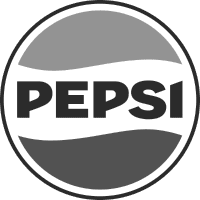Upright Kiosks
Vertical Kiosks
MetroClick Portrait Kiosks deliver high-tech indoor digital solutions with 4K high brightness touch screens, industrial components for 24/7 operation, and silent fanless design for brand-focused signage, in-store ordering, photobooths, and trade show applications.
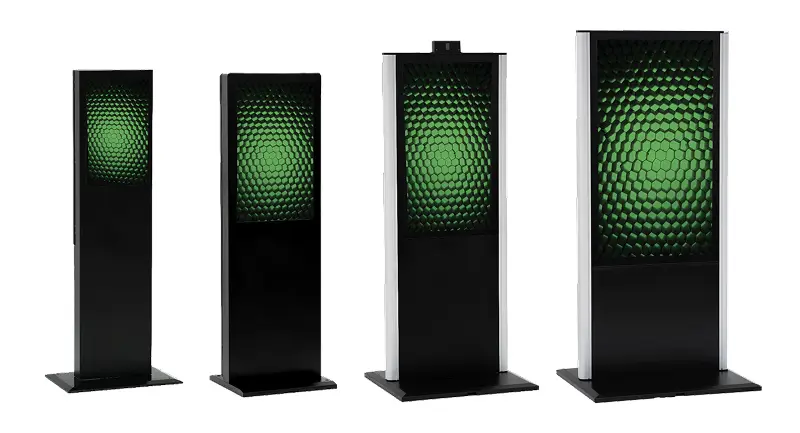
Utilize highest quality LCD panels for years of bright operation
Industrial components ensure reliable 24/7 vertical kiosk operation with 4K high brightness touch screens delivering 1000+ nits, while only the highest quality LCD panels and backlight components maintain display brightness for years to come.
Experience silent operation with 100% fanless design
Fanless construction eliminates noise for professional environments requiring quiet operation, while optional HD camera integration supports photobooth, brand activation, and interactive applications with seamless user experiences.
Build your kiosk to suit your needs with flexible processor options
Choose from Intel Celeron, Intel i5, AMD Ryzen 7, or Android S905/A311D processors to match specific application requirements, whether serving as brand-focused digital signage, in-store ordering kiosks, or trade show touch points.
Our Upright Kiosks
22″ Upright Kiosk

32″ Upright Kiosk

43″ Upright Kiosk

55″ Upright Kiosk

Trusted by industry leaders to power better customer experiences
Discover the versatility built into each product
Built for Every Environment
Trust in ruggedized, rated, reliable and robust devices of all shapes and sizes that perform flawlessly indoors or out.
Engage and Inform
Guide users through effortless, self-driven, interactive experiences or stream advertisements and promotions 24/7 on optically bonded, enhanced viewing touch screens.
Modular in Design
Easily configure, connect and scale devices to suit different locations, functions and use cases, while streamlining maintenance, serviceability and operational expenses.
Unapologetically Authentic
Fit any space with aesthetics and branding that drives emotional resonance and authentic connections to your true brand.
Other hardware options
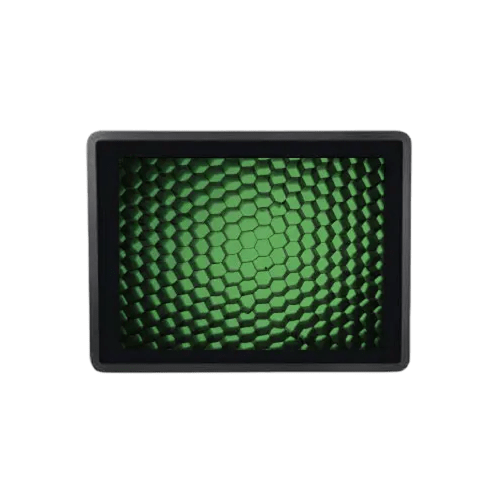
Small Format Kiosks
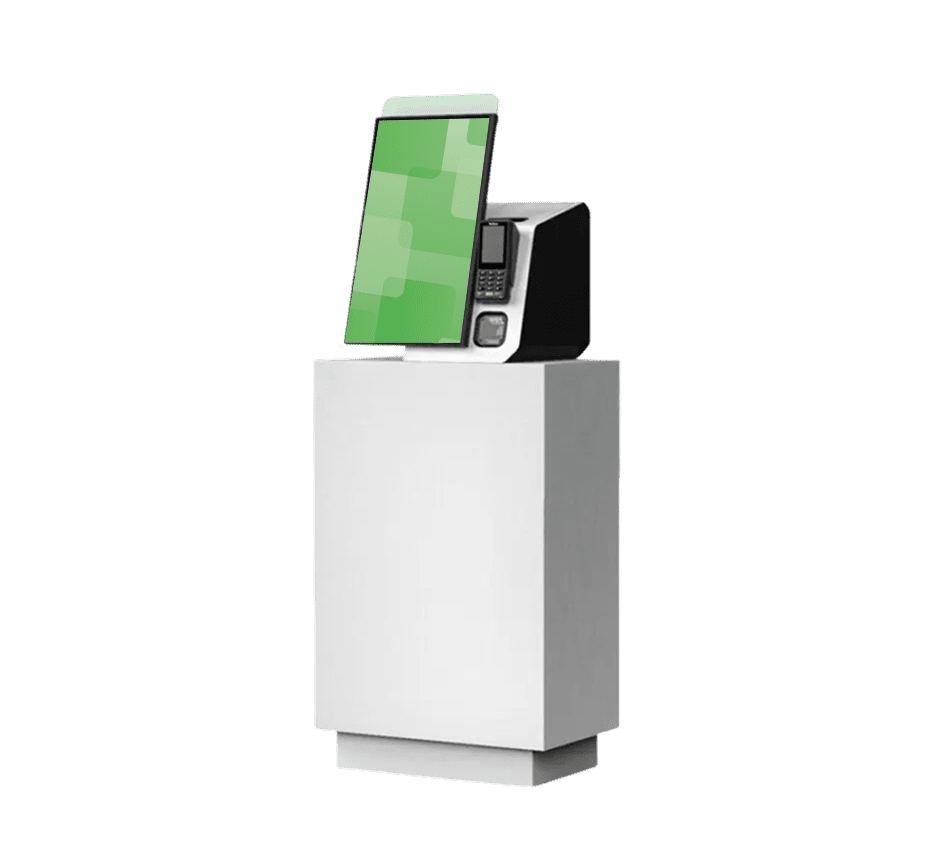
Transactional Kiosks
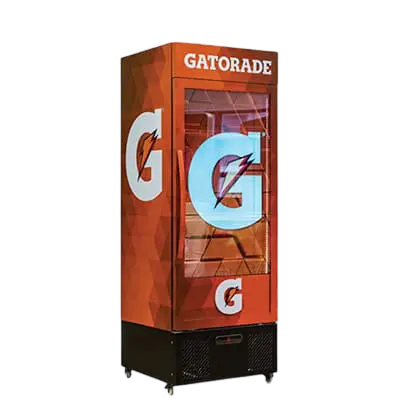
Immersive Kiosks
More Information
Upright Kiosk Solutions for Maximum Visibility and Engagement
Upright kiosks represent the quintessential self-service solution, featuring vertically-oriented displays mounted on sturdy pedestals that command attention in any environment. These floor-standing units combine ergonomic design with powerful interactive capabilities, creating engaging touchpoints that serve customers efficiently while maintaining a professional presence. MetroClick’s upright kiosk solutions leverage decades of engineering expertise to deliver reliable, attractive, and highly functional systems that enhance customer experiences across diverse industries.
The vertical orientation of upright kiosks naturally aligns with human posture and viewing angles, making them instantly recognizable and approachable for users of all heights and abilities. Standing typically between 4 and 6 feet tall, these kiosks position screens at comfortable eye level for most adults while remaining accessible to wheelchair users through thoughtful design considerations. This universal accessibility, combined with prominent placement options, makes upright kiosks ideal for high-traffic locations where visibility and ease of use are paramount.
Structural Design and Stability Engineering
Base Configuration and Weight Distribution
Upright kiosks require sophisticated engineering to maintain stability while presenting sleek, modern profiles that are perfect for urban settings. The base design plays a critical role in preventing tipping while minimizing floor footprint. MetroClick’s upright models utilize weighted bases with low centers of gravity, typically incorporating steel plates or concrete ballast within aesthetically pleasing enclosures. This weight distribution ensures stability even when users apply pressure during touch interactions or accidentally bump into units.
Advanced base designs incorporate cable management channels that route power and data connections through the pedestal, eliminating trip hazards while maintaining clean aesthetics. Some models feature adjustable leveling feet to compensate for uneven floors, ensuring screens remain perfectly vertical for optimal viewing. The marriage of form and function in base design exemplifies the attention to detail required for successful upright kiosk deployments in retail environments and public spaces.
Enclosure Materials and Durability
The vertical enclosures of upright kiosks must withstand continuous public use while maintaining an attractive appearance. Industrial-grade materials, including powder-coated steel, brushed aluminum, and impact-resistant plastics, provide durability without sacrificing design flexibility. These materials resist scratches, dents, and corrosion while supporting the weight of large displays and internal components.
Ventilation design in upright enclosures addresses the thermal challenges of housing powerful computers and bright displays within confined vertical spaces. Strategic vent placement creates natural convection currents that dissipate heat without requiring noisy fans. This passive cooling approach maintains component reliability while ensuring quiet operation suitable for hospitality venues and library settings where noise would prove disruptive.
Display Integration and Viewing Optimization
Screen Size and Aspect Ratio Considerations
Upright kiosks typically feature displays ranging from 2″ to 55”, with aspect ratios optimized for standing users. Portrait orientation screens excel at displaying vertical content like menus, directories, and form-based interfaces. Landscape displays better suit video content and horizontal layouts. MetroClick offers both orientations, allowing businesses to select configurations matching their specific content requirements and user interaction patterns.
The height of display mounting within upright enclosures significantly impacts user experience. Screens positioned too high cause neck strain, while those mounted too low require uncomfortable stooping. Optimal mounting places screen centers between 48” and 60” from floor level, accommodating the broadest range of user heights. This standardization ensures consistent experiences across multi-unit deployments while maintaining ADA compliance for accessibility.
Brightness and Anti-Glare Technologies
Upright kiosks often occupy prominent positions in brightly lit spaces, requiring displays with sufficient brightness to maintain visibility. High-brightness panels rated at 500-1000 nits ensure content remains visible even in direct sunlight near windows or under intense retail lighting. These enhanced displays consume more power but deliver the visual impact necessary for effective communication in challenging environments.
Anti-glare treatments applied to touchscreen surfaces reduce reflections that could impair visibility or create distracting mirror effects. These treatments balance reflection reduction with touch sensitivity preservation, ensuring responsive interaction despite the protective coatings. Some upright models incorporate ambient light sensors that automatically adjust screen brightness throughout the day, optimizing visibility while minimizing power consumption during off-peak hours.
Versatile Deployment Scenarios
High-Traffic Public Spaces
Upright kiosks excel in transportation hubs, shopping centers, hotels, sports stadiums, and municipal buildings where thousands of daily users seek information or services. Their prominent vertical profile ensures visibility from distances, helping visitors locate assistance quickly. Wayfinding applications particularly benefit from upright formats that display maps and directions at natural viewing heights while occupying minimal floor space in crowded corridors.
Queue management represents another ideal application for upright kiosks in busy environments. Banks and government offices position these units near entrances, allowing visitors to check in and receive queue numbers without staff assistance. The vertical format accommodates both touchscreen interfaces and integrated ticket printers within single cohesive units. This self-service approach reduces perceived wait times while improving operational efficiency.
Retail and Commercial Applications
Retail kiosks in upright configurations serve multiple functions, from product information lookup to complete point-of-sale transactions. Department stores strategically place these units throughout sales floors, enabling customers to check inventory, compare products, and even complete purchases without visiting traditional checkout counters. The professional appearance of upright kiosks reinforces brand image while providing practical functionality.
Restaurant environments increasingly adopt upright ordering kiosks to supplement traditional counter service. Quick-service establishments position multiple units in lobby areas, allowing customers to place orders at their own pace while reducing pressure on staff during peak periods. The vertical format naturally creates orderly queues as customers line up behind active users, maintaining organized traffic flow without requiring physical barriers or signage.
Component Integration and Peripheral Support
Payment Processing and Security
Modern upright kiosks frequently incorporate payment processing capabilities requiring secure integration of card readers, PIN pads, and cash acceptors. The vertical structure provides ideal mounting positions for these peripherals at ergonomic heights while maintaining security through recessed installation. Encrypted card readers position naturally below screens where users expect to find them, while cash handling components integrate within locked compartments accessible only to authorized personnel.
Security considerations extend beyond payment processing to overall kiosk protection. Upright units in public spaces require robust locking mechanisms that prevent unauthorized access to internal components. Some models include alarm systems that trigger upon tampering attempts, while others incorporate GPS tracking for theft recovery. These security features provide peace of mind for operators deploying valuable equipment in unattended locations.
Printing and Document Handling
Many upright kiosk applications require printing capabilities for receipts, tickets, or documents. The vertical format accommodates various printer types within the pedestal structure, protecting mechanisms from damage while maintaining easy paper loading access. Thermal printers for receipts mount behind small dispensing slots, while larger document printers may occupy dedicated compartments with front-facing output trays.
Advanced implementations include document scanning capabilities for applications like hotel check-in or government services. Flatbed scanners integrate into horizontal surfaces atop pedestals, while sheet-fed scanners mount vertically within enclosures. This peripheral integration transforms upright kiosks into comprehensive self-service stations capable of handling complete transactions independently.
Future-Ready Upright Kiosk Innovations
Emerging technologies continue expanding upright kiosk capabilities. Biometric authentication, including facial recognition and palm scanning, enhances security while streamlining user identification. Voice interaction capabilities reduce reliance on touch interfaces, which is valuable for hygiene-conscious users and those with mobility limitations. Artificial intelligence powers predictive interfaces that anticipate user needs based on interaction patterns and environmental factors.
5G connectivity promises enhanced responsiveness for cloud-based applications while enabling new use cases like real-time video consultation through kiosk-mounted cameras. Modular designs allow field upgrades as technologies mature, protecting investments while ensuring systems remain current. MetroClick’s commitment to innovation ensures upright kiosk solutions evolve alongside changing customer expectations and technological capabilities.
The enduring popularity of upright kiosks stems from their perfect balance of visibility, functionality, and professional appearance. From bustling airports to intimate retail boutiques, these versatile systems deliver consistent, reliable self-service experiences that benefit both operators and users. Whether deployed individually or in networks, upright kiosks remain the gold standard for interactive digital signage and self-service applications.




